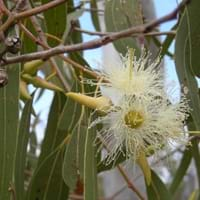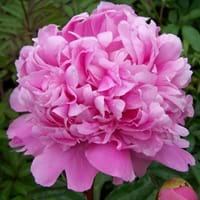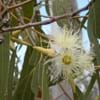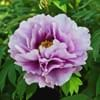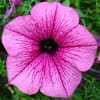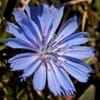Life Span
Perennial
Annual
Origin
Australia
China, Japan
Types
Eucalyptus absita, Eucalyptus acies, Eucalyptus calycogona
Not Available
Habitat
River side
Grassland, Woods
USDA Hardiness Zone
9-10
3-9
Sunset Zone
5, 6, 8, 9, 10, 11, 12, 13, 14, 15, 16, 17, 18, 19, 20, 21, 22, 23, 24
A1, A2, A3, 1a, 1b, 2a, 2b, 3a, 3b, 4, 5, 6, 7, 8, 9, 10, 11, 14, 15, 16, 17, 18, 19, 20
Habit
Oval or Rounded
Upright/Erect
Flower Color
Pink, Red, White
Light Pink, Pink, White
Flower Color Modifier
Not Available
Not Applicable
Fruit Color
Yellow Brown
Brown, Brownish Red, Green
Leaf Color in Spring
Dark Green
Green, Light Green
Leaf Color in Summer
Gray Green
Red, Green, Light Green
Leaf Color in Fall
Gray Green
Red, Green, Light Green
Leaf Color in Winter
Gray Green
Green
Leaf Shape
Oval
Arrowhead
Plant Season
Winter
Early Fall
Sunlight
Full Sun
Full Sun, Partial shade
Type of Soil
Well drained
Loamy, Well drained
The pH of Soil
Slightly Alkaline
Neutral
Soil Drainage
Well drained
Moist
Bloom Time
Early Summer, Spring
Early Summer, Late Spring, Spring, Summer
Tolerances
Drought
Cold climate, Heat Tolerance
Where to Plant?
Ground
Ground, Pot
How to Plant?
Stem Planting
Budding
Plant Maintenance
Medium
Medium
Watering Requirements
Requires regular watering, Requires watering in the growing season, Use and maintain water-efficient soaker hoses, Water Deeply, Water twice a day in the initial period
Requires regular watering
In Summer
Lots of watering
Lots of watering
In Spring
Moderate
Moderate
In Winter
Average Water
Average Water
Soil pH
Slightly Alkaline
Neutral
Soil Type
Well drained
Loam
Soil Drainage Capacity
Well drained
Well drained
Sun Exposure
Full Sun
Full Sun, Partial Sun
Pruning
Prune for shortening long shoots, Prune if you want to improve plant shape, Prune ocassionally, Remove dead or diseased plant parts
Remove damaged leaves, Remove dead branches, Remove dead leaves
Fertilizers
All-Purpose Liquid Fertilizer
All-Purpose Liquid Fertilizer
Pests and Diseases
Canker, head rot, Mealybugs, Root rot
Botrytis Blight, Nematodes, Ring spot, Stem rot, Verticillium Wilt
Plant Tolerance
Drought
Drought
Flower Petal Number
Single
Not Available
Fragrant Bark/Stem
Yes
No
Foliage Texture
Medium
Coarse
Foliage Sheen
Matte
Glossy
Allergy
Itchiness, Pain and fatigue, Respiratory problems
Abdominal pain, Avoid during Pregnancy, Stomach pain, Vomiting
Aesthetic Uses
Not Used For Aesthetic Purpose
Landscape Designing, Showy Purposes
Beauty Benefits
Not Available
Not Available
Environmental Uses
Air purification
Air purification
Medicinal Uses
Burns, Cough, Fever, Joint pain, Pulmonary tuberculosis, Upset stomach
Atherosclerosis, Chronic fatigue, Cold, Cough, Gout, Headache, hemorrhoids, Hepatitis, Liver problems, Menstrual Cramps, Muscle Pain, Nerve pain, Osteoarthritis, Premenstrual syndrome, Respiratory Disorders, Treating fever
Part of Plant Used
Leaves
Flowers, Root, Seeds
Other Uses
Oil is used as an industrial solvent, Oil is used in mosquito repellents, Used in paper industry
Showy Purposes, Traditional medicine, Use in Chinese herbology
Used As Indoor Plant
No
Sometimes
Used As Outdoor Plant
Yes
Yes
Garden Design
Not Available
Cutflower, Feature Plant, Foundation, Mixed Border
Botanical Name
Eucalyptus
Paonia lactiflora
Common Name
Eucalyptus
Chinese Peony
In Hindi
नीलगिरी
Paonia lactiflora
In German
Eukalyptus
Paonia lactiflora
In French
Eucalyptus
Paonia lactiflora
In Spanish
Eucalipto
lactiflora paonia
In Greek
ευκάλυπτος
Paonia lactiflora
In Portuguese
Eucalipto
Paonia lactiflora
In Polish
Eukaliptus
Paonia lactiflora
In Latin
Eucalyptus
Paonia lactiflora
Phylum
Magnoliophyta
Magnoliophyta
Class
Magnoliopsida
Magnoliopsida
Order
Myrtales
Dilleniales
Family
Myrtaceae
Paeoniaceae
Clade
Not Available
Angiosperms, Core eudicots, Eudicots
Tribe
Eucalypteae
Not Available
Subfamily
Myrtoideae
Not Available
Season and Care of Eucalyptus and Paeonia Lactiflora
Season and care of Eucalyptus and Paeonia Lactiflora is important to know. While considering everything about Eucalyptus and Paeonia Lactiflora Care, growing season is an essential factor. Eucalyptus season is Winter and Paeonia Lactiflora season is Winter. The type of soil for Eucalyptus is Well drained and for Paeonia Lactiflora is Loamy, Well drained while the PH of soil for Eucalyptus is Slightly Alkaline and for Paeonia Lactiflora is Neutral.
Eucalyptus and Paeonia Lactiflora Physical Information
Eucalyptus and Paeonia Lactiflora physical information is very important for comparison. Eucalyptus height is 2.50 cm and width 32.81 cm whereas Paeonia Lactiflora height is 91.50 cm and width 91.50 cm. The color specification of Eucalyptus and Paeonia Lactiflora are as follows:
Eucalyptus flower color: Pink, Red and White
Eucalyptus leaf color: Dark Green
Paeonia Lactiflora flower color: Light Pink, Pink and White
- Paeonia Lactiflora leaf color: Green, Light Green
Care of Eucalyptus and Paeonia Lactiflora
Care of Eucalyptus and Paeonia Lactiflora include pruning, fertilizers, watering etc. Eucalyptus pruning is done Prune for shortening long shoots, Prune if you want to improve plant shape, Prune ocassionally and Remove dead or diseased plant parts and Paeonia Lactiflora pruning is done Remove damaged leaves, Remove dead branches and Remove dead leaves. In summer Eucalyptus needs Lots of watering and in winter, it needs Average Water. Whereas, in summer Paeonia Lactiflora needs Lots of watering and in winter, it needs Average Water.
